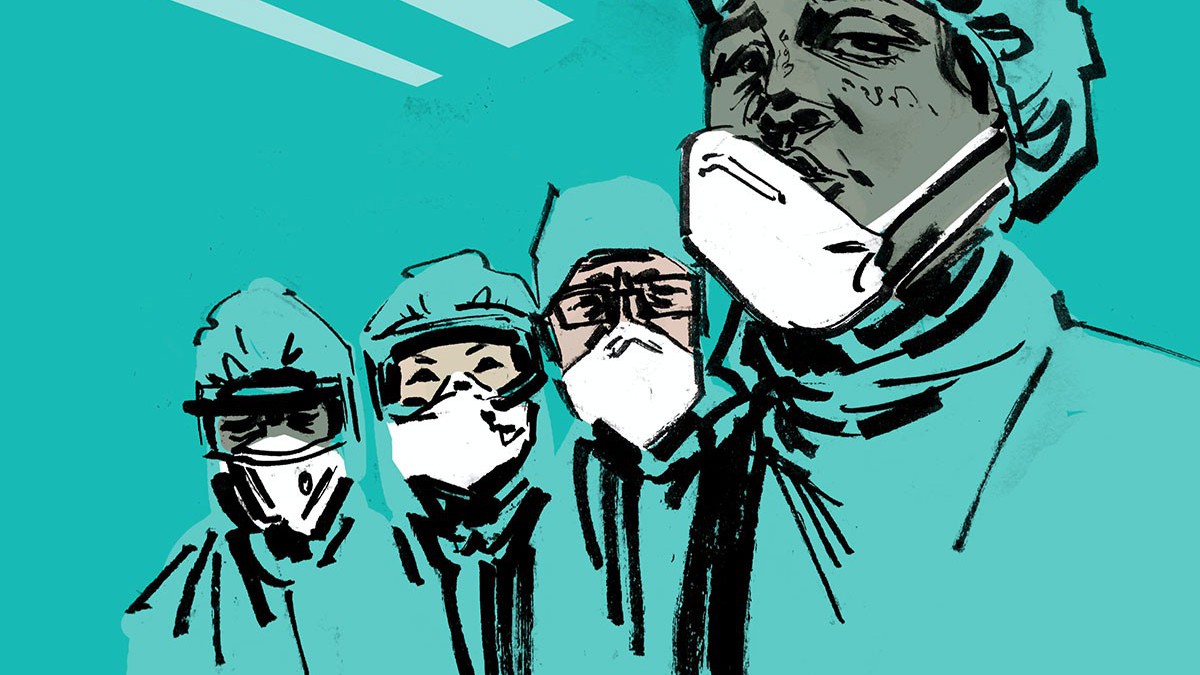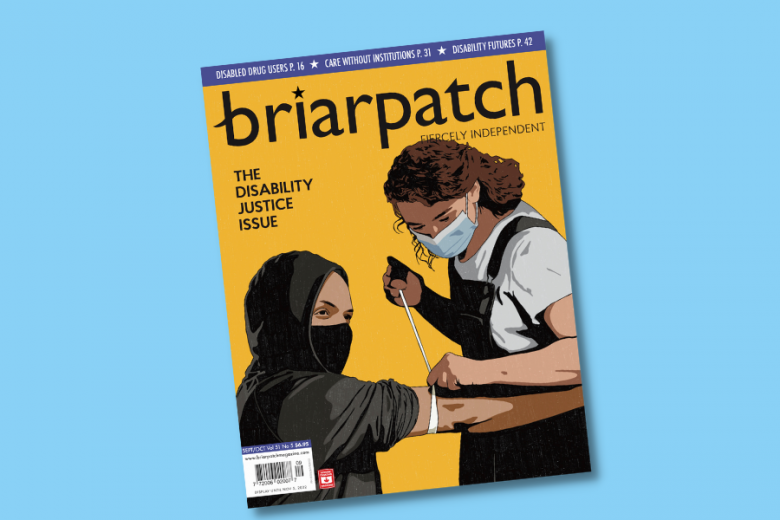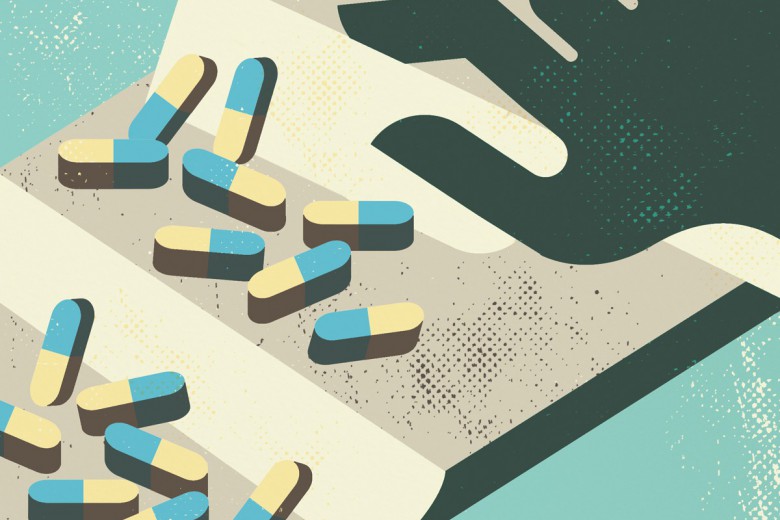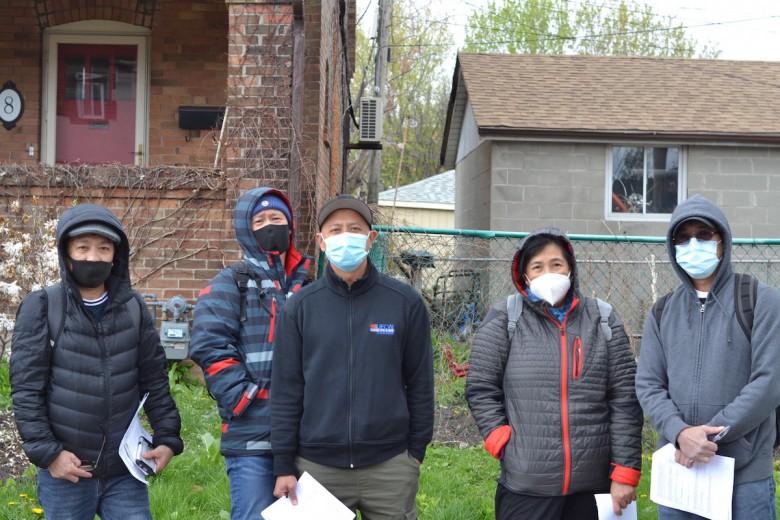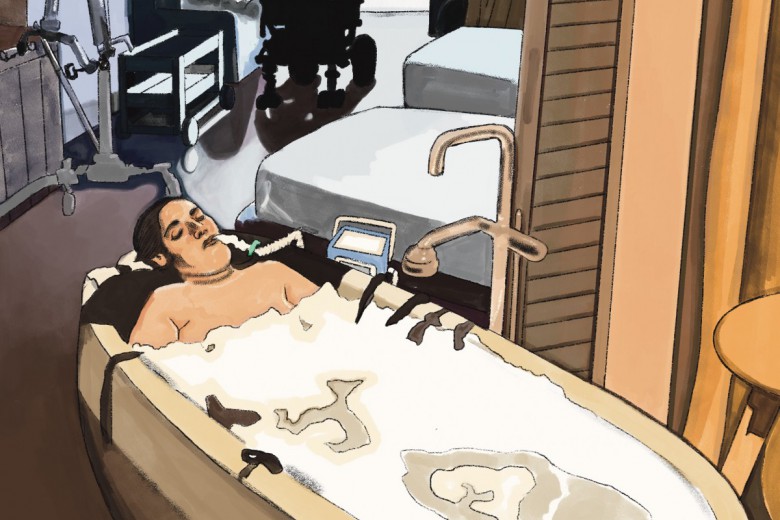When the pandemic took hold in March, my work as a doctor in remote communities in northern Quebec and Ontario was suspended – first by an abruptly imposed quarantine due to recent travel and then by the dry cough I developed as soon as I emerged from it. Confined at home, I read voraciously. Dire descriptions from critical care physicians in Seoul and Seattle made the rounds; the first journal articles from Wuhan emerged. Raucous internet debates about prevention and treatment left me swirling in eddies of confusion. I spoke with friends in Milan and New York, followed the increasingly frantic tone of group chats with colleagues in London.
Only some of what I learned was useful. Most of the time, in the places in which I practise, we can barely get an X-ray, let alone materials for the complex intensive interventions available in high-tech hospitals. It may be impractical to have expensive equipment and specialized staff in every single isolated community, but rural and especially Indigenous health services have also long been underfunded.
The practice of medicine is defined by coping with uncertainty, but few had experienced the scope of the ambiguity through which we lurched.
Regional health authorities where I work invited us to meetings, trying to model what might happen if – when – the virus arrived, a process rife with uncertainty, given a pathogen with unknown behaviours. The calls were tense: in our low-resource contexts, the simplest questions became complicated. Would we be able to transfer patients to intensive care units without contaminating aircraft and ambulances? Did we have the capacity to deal with potentially infectious bodies and funeral rites? And we spent hours debating the bane of everything in those early days: testing. Some, aware of scarce resources, wanted to use tests sparingly. Others, precisely because of our scarce resources, wanted to be aggressive in detecting cases. I fell firmly in the latter camp, the one conviction to which I clung. The practice of medicine is defined by coping with uncertainty, but few had experienced the scope of the ambiguity through which we lurched.
When I did return to the North, it took me a while to adjust to the new way of doing things: phone appointments, no more physiotherapy services, limited medical travel for patients, and no escorts for sick people. The clinic itself was physically rearranged, with separate entrances and sections depending on symptoms or travel history. Emergency care shifted: our teams put in extra hours to run through training simulations we put together to manage routine medical problems now rendered more convoluted.
Clinical staff were not the only ones learning. Triage workers were trained to screen arrivals from behind plexiglass for possible symptoms and risky travel history – the true front line. Maintenance staff at the clinic reviewed protocols for varying degrees of disinfection. They reshuffled layouts countless times as we dithered about where it was safer to work, or we responded to new evidence suggesting we needed to try it this way instead of that. Administrators had to source and procure gloves, masks, respiratory devices. Homecare workers learned procedures for donning and doffing personal protective equipment so that they would neither carry the virus in – for example, when they did a home visit to bathe a patient or deliver a meal – nor carry it out to their next client. Patients themselves, accustomed to the clinic as a public space, adjusted to calling to ask permission before coming. Families adapted to minimizing contact with elders.
Without them, our species’ enduring belief that this pandemic can be overcome would be pathetic rather than endearing.
This labour of preparation – cognitive, physical, and emotional – is not heroic. It does not make the news. But without it, we were doomed. For us, without the enormous resources available to the mammoth big-city hospitals, this collective effort was essential in order to stop us from being overwhelmed. In 2009, Indigenous communities on-reserve were disproportionately hit by the H1N1 pandemic: one statistic suggests that Indigenous people made up over a quarter of all intensive care admissions in Canada during the first wave, despite representing less than 5 per cent of the population at the time. But this time, at least until late summer, through proactive action, remote Indigenous populations have largely been spared the brunt of COVID-19’s first wave.
Few things about this pandemic are unprecedented. From histories of plague, syphilis, smallpox, HIV, Ebola, yellow fever, tuberculosis, and cholera, we know infectious epidemics rely on humans’ inherent sociability to spread. But we also know that during those times, people relied on community, too, to adjust and learn, as well as to grieve. Niceties about community building, of course, plaster over the fact that the labour is borne more by some than others. Care work is not equitably distributed, and neither is its glory. Workers with the most sustained and intimate contact with the sick – in Canada, largely racialized and feminized – are at heightened risk of infection.
Without them, our species’ enduring belief that this pandemic can be overcome would be pathetic rather than endearing. In so many nooks in our institutions, this labour of hope continues, in its myriad, surprising forms, by many compelled to do it out of necessity, out of duty, out of no other choice. And I witness how – though the systems of care we have built may now be broken by our own hubris and folly – the quiet temerity of that work itself still lets us live.


